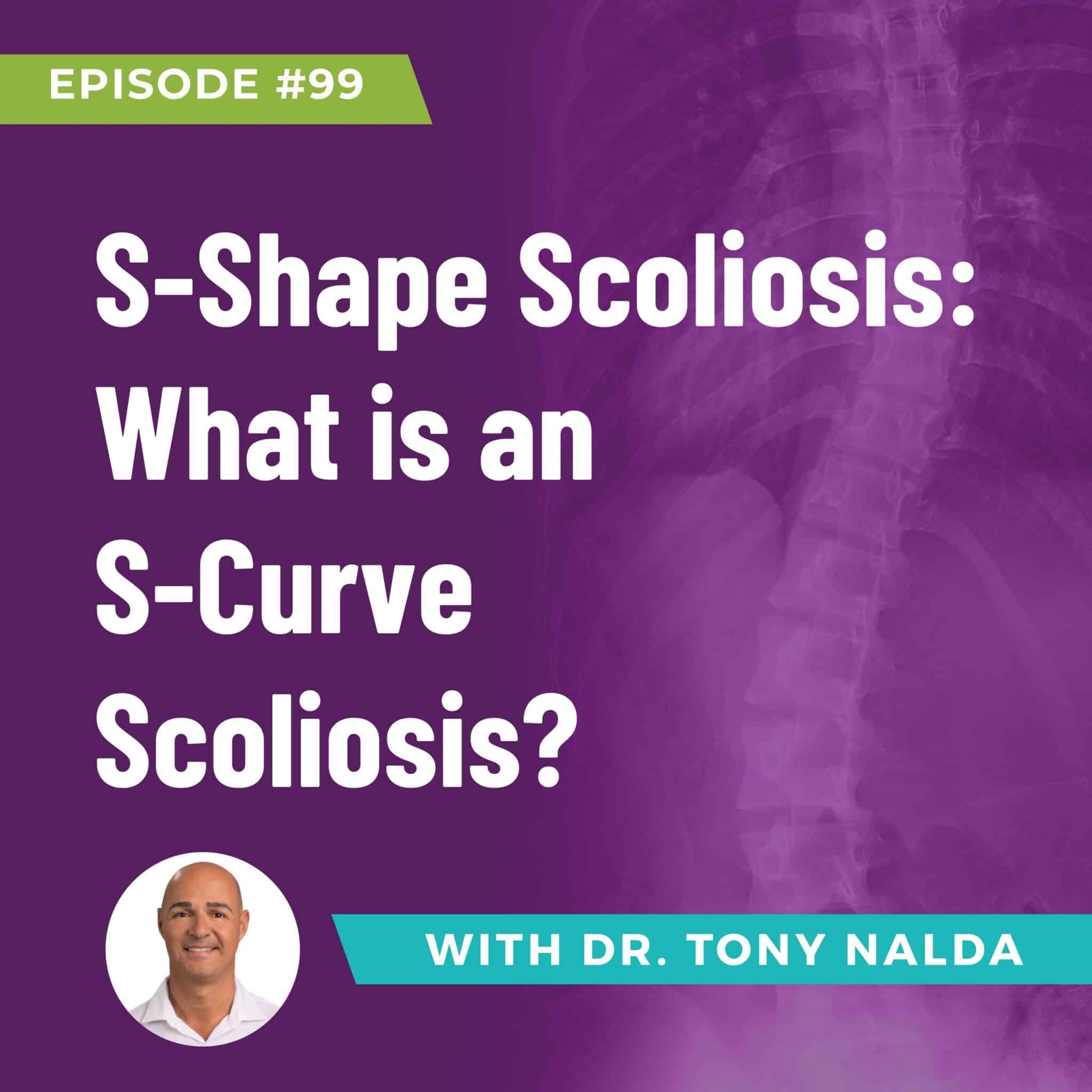Episode 99: S-Shape Scoliosis: What is an S-Curve Scoliosis?
Patients diagnosed with scoliosis often hear terms like the C curve or the S curve, leaving them curious about the implications. In this podcast, Dr. Tony Nalda sheds light on the specifics of S-shaped scoliosis, emphasizing the diagnostic parameters, classifications, and complexities involved in treating this unique curvature.
Understanding S-Shape Scoliosis
To comprehend an S-shaped curve, one must first understand scoliosis diagnosis. An unnatural sideways curvature of the spine, accompanied by a rotational twist, defines scoliosis. The Cobb angle, measuring the curvature, must be 10 degrees or greater for a diagnosis. Scoliosis can further be classified based on age, cause, severity, and location within the spine.
Types of Scoliosis Based on Severity and Location
- Mild Scoliosis - 10-25 degrees
- Moderate Scoliosis - 25-40 degrees
- Severe Scoliosis - 40 degrees or plus
- Very Severe Scoliosis - 80 degrees and greater
The most common S-shaped curve involves two curves of similar size, typically a lumbar and thoracic curve. These double-curve scoliosis, resembling an S, are more complex to treat than single-shaped C curves.
Challenges of S-Shaped Curves
S-shaped curves tend to be more symmetrical, presenting challenges in reduction compared to less symmetrical curves. The degree of difficulty increases as both curves not only bend in opposite directions but also rotate in opposite directions.
When treating S-shaped curves, it is important to seek a specialist due to their complexity. Flexible studies help identify the dominant curve, guiding more aggressive treatment for the stiffer curve.
Effective Treatment Approaches
- Chiropractic Care - adjustments to correct spinal positions
- Scoliosis-Specific Exercises - targeted exercises for stabilization
- Corrective Bracing - customized braces for pushing forces to reduce scoliosis
- Physical Therapy - passive therapies, reflexive exercises, and gait therapy
An integrated approach, including chiropractic care, exercises, and corrective bracing, ensures coordinated efforts for the most effective treatment. In-office therapies utilize traction, vibration, neuromuscular education, and reflexive exercises to strengthen and mobilize the spine.
Navigating S-shaped scoliosis requires a tailored approach, combining different therapeutic disciplines. At the Scoliosis Reduction Center, the focus is on achieving measurable results, improving spine health, and addressing symptoms associated with scoliosis.
To explore these approaches further, listen to Dr. Nalda's podcast for additional insights on managing and treating not only S-shaped curves but various scoliosis types.
Artlist.io 847544
Podcast: Play in new window | Download
Subscribe: RSS
Dr. Tony Nalda
DOCTOR OF CHIROPRACTIC
After receiving an undergraduate degree in psychology and his Doctorate of Chiropractic from Life University, Dr. Nalda settled in Celebration, Florida and proceeded to build one of Central Florida’s most successful chiropractic clinics.
His experience with patients suffering from scoliosis, and the confusion and frustration they faced, led him to seek a specialty in scoliosis care. In 2006 he completed his Intensive Care Certification from CLEAR Institute, a leading scoliosis educational and certification center.
About Dr. Tony Nalda
 Ready to explore scoliosis treatment? Contact Us Now
Ready to explore scoliosis treatment? Contact Us Now








